www.African Safaris and Travel - Dedicated Photographic Safaris in Botswana!
Mashatu Game Reserve is situated at the confluence of the great Limpopo and Shashe Rivers in the remote eastern corner of Botswana. This area is known historically as the Tuli Enclave and it is here where the three countries; Botswana, South Africa and Zimbabwe converge. In addition to this large conservation area, Mashatu Game Reserve offers refuge to the largest elephant population on a private reserve on the African continent.
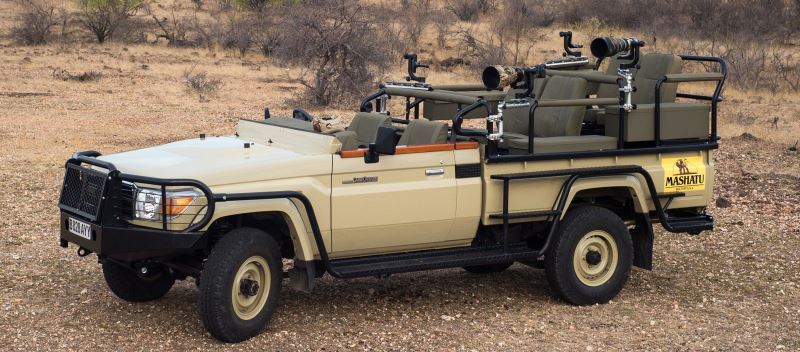
Photo Credit:- Mashatu Game Reserve
Wildlife photography and traditional safaris don't often mix. As a photographer, it's always frustrating when your guide, or the people on your safari vehicle, are uninterested in subjects that you would like to photograph. Wildlife photography requires patience, preparation, dedication and a guide that understands how to get you into the right position for that perfect capture. You also need lots of space and equipment to move in your vehicle. In short - you need to go on a dedicated photographic safari!

Photo Credit:- Mashatu Game Reserve
Photographic Vehicle
Designed and built by the same wildlife photographers who built the world famous underground hides at Mashatu, the PhotoMashatu photo vehicle is a fully customised vehicle built exclusively for Mashatu Game Reserve. Its design and concept stem from wanting to give clients exceptional access to the excellent wildlife of Mashatu and allow them to photograph the wildlife in an uninhibited and unconstrained manner. The PhotoMashatu professional photographers have many thousands of hours on safari vehicles in Africa, many of them offering attributes, some positive and some negative. This specialist photo vehicle is the culmination of this wildlife photographic experience and it offers unparalleled photographic ease, speed and comfort. No element of design was left out.
What is it?
The vehicle is a totally customised design, equipped with sliding gimble heads allowing for comfortable, quick and well supported photography in a 270 degree radius for each photographer. Bean bag arches allow you even faster access to get the initial shot. Cushioned, dust and waterproof bag storage compartments allow for fast access to your lenses and other photographic equipment. The vehicle comes with your specialised photographic guide and a Mashatu field ranger.

Photo Credit:- Mashatu Game Reserve
Rates:
Photographic Rates (in US$ per person) Rate 2020
Hide Session- Half Day (Morning or Afternoon Session) 85
Hide
Session- Full Day (Morning and Afternoon Session) 150
Exclusive use of Matebole Hide – Half Day (Morning or Afternoon
session – 8 pax) 580
Exclusive use of Matebole Hide –
Full Day(per day AM to PM Morning and Afternoon session – 8 pax)
1040
Tutoring at camp. Not included in hide fee 60
Lens
rental (per day) 70
Canon 7D Body (Per day) 40
PhotoMashatu Vehicle 650
*(per day – maximum 4 pax, but
ideally suited to 2 pax. Includes 1 optional tutor session per
day & 1 x hide session subject to availability upon booking.
Please note that the 1 optional tutor session per day & 1 x hide
session (subject to availability upon booking) offered when
booking the PhotoMashatu photographic vehicle, must coincide
with the use of the PhotoMashatu photographic vehicle. For dates
1 December – 1 June each year : “book 3 days, pay 2” and “book 4
days, pay 3” special on photo vehicle.)
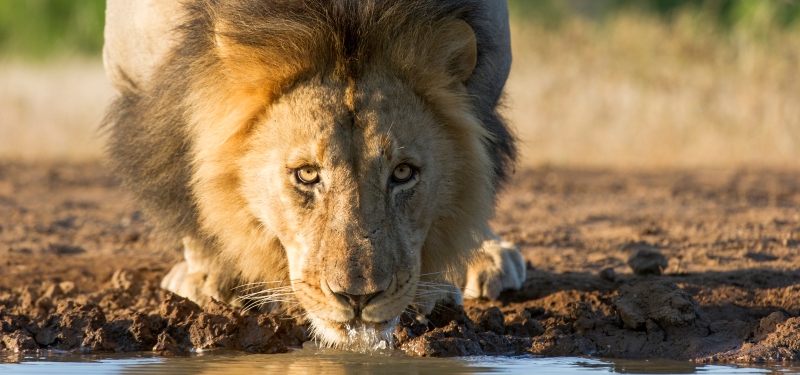
Photo Credit:- Mashatu Game Reserve
Exclusive Photographic Hides
In a first for photography in Southern Africa, PhotoMashatu has an exclusive concession to provide dedicated photographic hides within Mashatu Game Reserve. Guests can sit quietly and watch animals moving directly towards them, all the while taking pictures from unique angles, resulting in unique and exceptional quality photography.
What are photographic hides?
Photographic hides are structures built to maximise the photographic potential of the animal subjects that visit them. These hides can be used to view wildlife in the normal manner but have been positioned with consideration of the angle of the sun, the background and the angle the viewer occupies in relation to the animals and birds. A professional wildlife photographer will accompany participants to the hides. They are on hand to tutor both aspiring and experienced photographers in camera techniques which will see a vast improvement in the quality of their images.
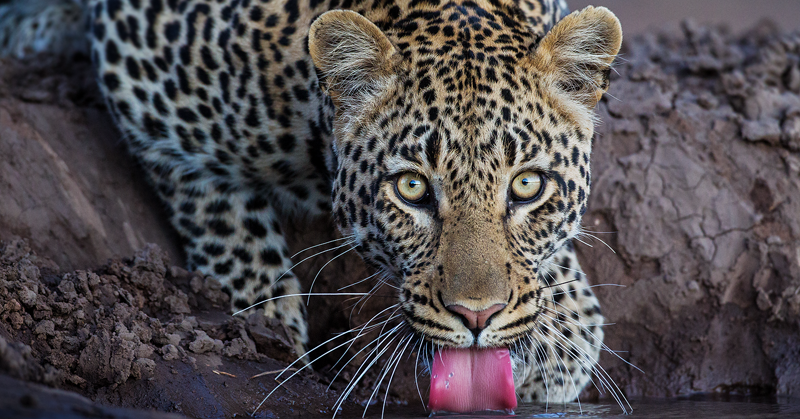
Picture Credit:- Kirsten Frost / Mashatu
The Concession
A resident wildlife photographer is based at Mashatu Lodge to guide participants when they are in camp. Guests can also enlist his/ her services while on game drives in the PhotoMashatu photographic vehicle should they require further tutelage over and above time spent in the hides. The services of a professional photographer in camp and the use of the photographic hides can be booked through Mashatu reservations as an additional activity over and above the daily rates for accommodation. Guests at Mashatu may use the hides for normal game viewing purposes as well as for photography. It must however be noted that regardless of their preference, they will always be accompanied by the photographic guide in the hides or a ranger from Mashatu Game Reserve.
Why Photography at Mashatu
Mashatu is renowned by photographers worldwide for the high photographic ‘hit’ rate in both the dry and wet seasons. The green season at Mashatu is characterised by short summer annual grasses thus ensuring that the wildlife subjects are photographed, unlike many parts of Africa where the wildlife would be only partially visible through thick vegetation or high savannah grasses, if at all.
Drying pools in the rivers attract flocks of storks and herons late in the rainy season (February – May). This is where the semi-permanent hides will be in use.
Excellent elephant sightings at the elephant hides and out in the reserve.
Excellent birdlife for the bird photographers.
Open landscape that makes for easy photographing of wildlife
Relaxed plains animals.
Excellent and varied birdlife with many good perches in certain areas making good bird photography very possible.
Excellent leopard sightings and photo opportunities.
Good lion and other predators.
Open landscape makes for easy photography with no distracting grass or thick bush.
Dry riverbeds frame subjects well.
Drying pools create fish traps attracting flocks of herons, storks, etc.
Wilderness area relatively close to the major cities.
Mashatu is a semi-arid area, which means that animals are attracted to water in the dry season (June – October). This makes it an excellent location where animals literally come to you!

Photo Credit:- Mashatu Game Reserve
Matebole Elephant hide
An entire hide has been sunk into the ground right next to a waterhole that is in prime elephant habitat. Inside, seating is arranged so that viewers’ heads are at ground level.
The waterhole attracts all manner of animals beside elephants including kudu, impala and baboons. However the real attraction is the elephants. These massive pachyderms tower above photographers as they splash and drink in the water as close as 3 meters away! The hide is a strong metal structure and totally elephant-proof allowing for total peace of mind. It is also located on a major elephant thoroughfare on route to shade on the banks of the Matebole and Majale Rivers where the elephant wait out the heat of the midday sun. Shortly after sunrise, when the mornings heat up, the elephant herds pass the hide and drink.
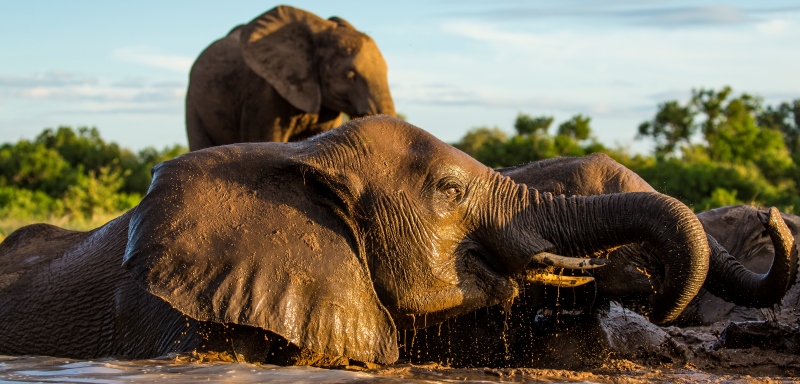
Photo Credit:- Mashatu Game Reserve
Being in a very animal-rich area, predators are
also abundant. Viewers may just be fortunate enough to see a
large cat at the waterhole too! The hide can take 8
photographers in one session. Best time of year for viewing from
the hide is June – November when the elephants generally visit
the waterhole every day.TIP: Morning sessions are usually better
than evening sessions at the hide.
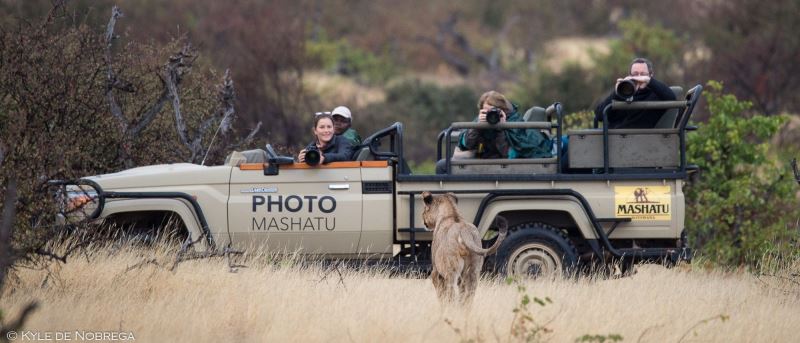
Photo Credit:- Kyle De Nobrega / Mashatu
Conditions of Use:
All guests using the hide have to be accompanied by a
PhotoMashatu wildlife photographer.
Should the PhotoMashatu
wildlife photographer be unavailable, guests of Mashatu can
utilize the hides, at the normal rate in the company of a
Mashatu guide.
Guests will be required to sign an indemnity
form before using the hides. This is separate to the Mashatu
indemnity.
No children under the age of 12 permitted in the
hides, unless sole-use of the hide is booked for a family.
Maximum number of guests per hide:
Matebole Elephant Hide – 8
clients
Why rent a lens for your safari?
The ability to rent-a-lens eliminates the worry of in-flight
weight restrictions and carrying the extra load on-board.
International travel weight restrictions have become stricter
each year, making it difficult to travel with large amounts of
camera gear; a large lens being by far the heaviest piece of
camera equipment you will bring along.
With the large cost to
purchase a lens that may be used a few times a year, it makes
sense to rent a lens specifically chosen to be the best for the
few days in the year that you are on safari.
We have
carefully chosen a selection of lenses that are perfectly adapt
for the terrain and wildlife viewing of Mashatu. The lenses we
offer are suitable for the beginner enthusiast through to
professional. With the open terrain that characterizes Mashatu,
it is optimal to use lenses that offer the photographer great
reach in order to zoom in on your subject. This is why all our
lenses exceed the standard reach of 300mm that allows you ‘fill
your frame’ and eliminate excessive cropping during post image
editing.
It gives you the opportunity to “see through the
eyes of a professional photographer” and capture the same type
of images that professional wildlife photographers take.
You
do not need to be a professional to use the lenses. Our staff
will give you a 5 minute introduction to using and caring for
the lens before you start taking great images with it.
What will renting a Lens offer YOU?
If you don’t own or use a long reach zoom or Prime lens, then the immediate difference in your image quality when using one of our lenses will be the first noticeable effect. The lenses have been crafted for high end results offering the best in sharpness and speed.
If you already own a lens, then the ability to rent one eliminates the need to bring along your own. Many people don’t own super zoom lenses that reach beyond 300mm. Our lenses all go beyond 300mm zoom length. This allows you to get crystal clear and close up images of your subjects. Some of our lenses extend to 600mm which allows for extreme zooming in to get images of small birds and the “eye of the elephant”. At Mashatu, the desired zoom length for photographing wildlife is between 400 and 500mm.
Renting a lens will offer you:
Less weight to carry while travelling
The opportunity to
experience and test out professional quality lenses while on
safari
Use lenses beyond 300mm in length, a focal range that
not many travellers ever get to experience.
Photograph
Mashatu’s wildlife with the optimum range of 400-500mm and thus
increasing your chance attaining of excellent images
Use
lenses that perform best in low light. A lot of animal activity
occurs at dusk and this is when these lenses still work very
well.
We supply beanbags and other support for the lenses
when you rent them from PhotoMashatu.
To see the world and
take images like a professional photographer
Our selection of Lenses
Sigma’s motto is not to be the biggest Lens Company in the world, but simply to be ‘revolutionary’. Their new range of SPORT Lenses is a true testament to this and they are on top of the game when it comes to versatile zoom lenses. The close focusing distance of 150mm and the far reaching 600mm ensure that weather you are in the hide or out on game drive, you can capture all the action. The aperture of f5.6 at the short end of 150mm tapers off to f6.3 at the long end at 600mm on this zoom lens. These lenses offer extreme versatility and flexibility, which in turn, means it is very easy for you to use and take excellent images with.
PhotoMashatu Units
Nikon Sigma 150 – 600mm f5.6 – 6.3 Lens 1
Canon Sigma 150
– 600mm f5.6 – 6.3 Lens 1
When choosing the lens that will
best suit you, there are a few factors to keep in mind that will
ultimately help you take better photographs. The best Lens is
the one that suits the photographer the most.
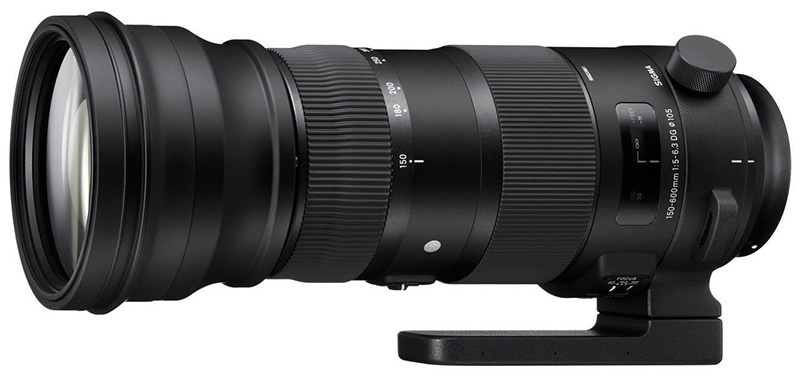
Ask yourself the following:
Can or do you want to be able to hold it by hand?
Do I
want to be able to zoom, particularly if you don’t own a zoom
already to use alongside the large fixed focal lenses?
Do I
want to change lenses on a game drive if the fixed focal lenses
have too much ‘zoom’?
Do I want to sacrifice the lighter
weight and smaller size of the SIGMA lenses over a slight edge
in sharpness, heavier weight and marginally faster speed of the
lens autofocus like the big fixed focal 500mm and 600mm lenses?
Do I want a lens that will perform marginally better in low
light conditions?
Do I want to rent a lens that will cover
all wildlife, from birds to close ups?
SIGMA 150 – 600mm
Lighter than 500mm or 600mm fixed lens
Versatile, ie: can
zoom from 150mm to 600mm
Can be handheld if necessary
For
clients wanting to get a feel for a professional photographers
point of view but without the burden of too much weight.
Can
fit into larger camera bag, making it easier to carry
Great
all round lens for all types of wildlife.
Easy to manage and
hold while out on game drive
Easy to operate
Cost of lens
Rental - The cost for 2020 is USD $70.00 per lens per day.
This includes: Hand over to the client, Insurance of the lens and Maintenance and cleaning
The Canon 7D Camera Body: (1 unit available)
The Canon 7D is a great choice for keen enthusiasts. It has top image quality and functionality without the bulk of the top level professional bodies. The 18mp CMOS sensor, 100% coverage viewfinder, 1.6 crop factor and up to 8 frames per second in continuous shooting, makes it an ideal camera for great wildlife and bird photography.
Lenses to use at Mashatu
Photo skill Level Beginner-Intermediate- advanced
Equipment
1-2 Pro-sumer/Pro camera bodies if photographing birds
1
consumer camera body if only photographing mammals
500-600mm
lens for birds
70-200mm lens for the scenic images
100-400mm range for mammals
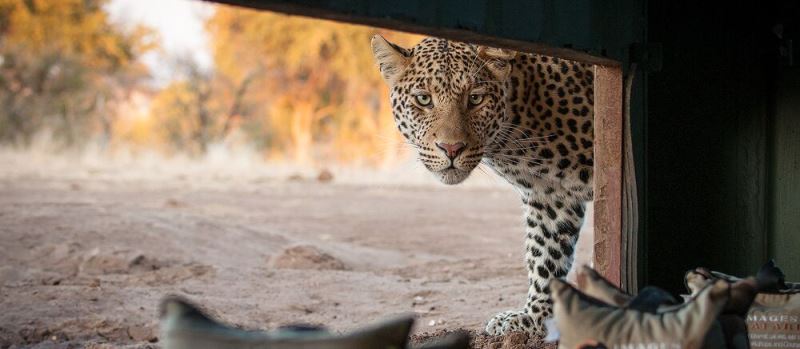
Photo Credit:- Kyle De Nobrega / Mashatu
Beanbags
All your drives will be from an open vehicle with a ranger driving and guiding you. This means that a monopod or a beanbag will be the best types of support for your cameras and lenses. The vehicles are allowed to drive off road here so they will be able to position you for the best angle for photos at sightings. Most of the mammals are very relaxed around vehicles meaning a 400mm lens is more than enough to capture them. Of course having a zoom aids in your compositions here, especially when photographing action scenes or changing from a full body photo to a portrait. It is suggested to use a lens in the 100-400mm range. Most predators are either moving fast or move in the dark hours of day (lion and leopard). Having a lens that you can easily maneuver around makes a big difference here. An extra 2 seconds to set up your camera is a long time when photographing action.
If you are keen on bird photography, then a 500-600mm lens is very handy. With most birds you are able to get relatively close, so this is the one place where a 500mm lens will do for bird images.
With the relaxed elephant herds you can expect to use your wide-angle lens as well as the longer lenses. This is the one place you will have opportunity for every focal length when it comes to elephants. A wide-angle 12-24mm lens will frame an elephant very nicely against the sky. With them coming so close to you, this is quite easy to do. If you drive in front of an approaching herd and sit quietly the herd will envelop around you without any fuss. The only sound will be the camera shutters working away!
![]()